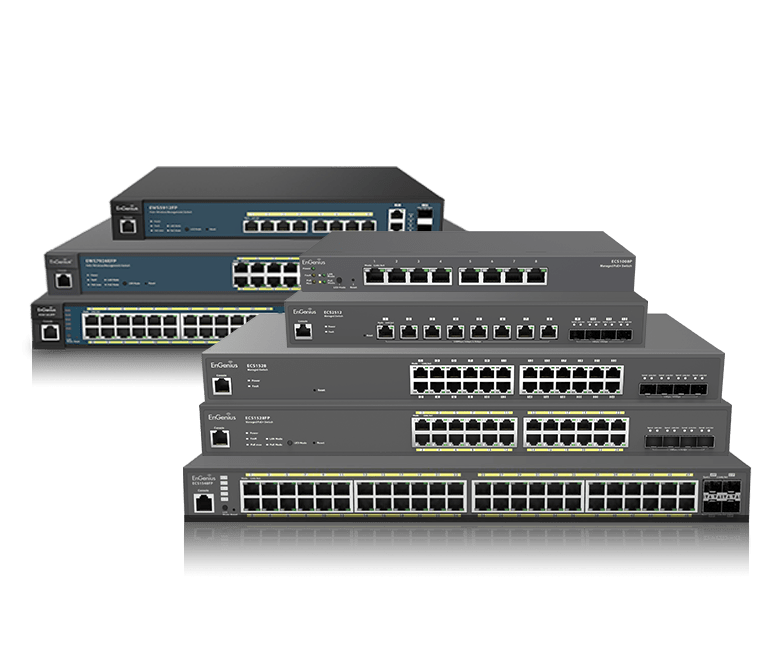
End Ethernet Switches
Ethernet switches are essential networking devices that connect multiple devices within a local area network (LAN), enabling data to be transmitted efficiently between them. They operate by receiving incoming data packets and forwarding them to the appropriate destination devices, ensuring smooth and reliable communication within a network.
A key advantage of Ethernet switches is their ability to manage data traffic intelligently. Unlike hubs, which broadcast data to all connected devices, switches only send data to the specific device it is intended for. This improves network performance by reducing unnecessary traffic and minimizing the chances of data collisions. Ethernet switches can operate at different speeds, such as 10/100 Mbps or Gigabit Ethernet (1 Gbps), with modern models supporting even higher speeds like 10 Gbps, catering to high-performance networks.
Ethernet switches come in different types, including unmanaged, managed, and smart switches. Unmanaged switches are simple plug-and-play devices, ideal for small networks where advanced configuration is not required. Managed switches, on the other hand, offer more control over network traffic, allowing administrators to configure network settings, manage VLANs (Virtual Local Area Networks), and monitor network performance. Smart switches provide a middle ground, offering some manageability without the complexity of fully managed switches.
Ethernet switches are widely used in various industries, from small office setups to large data centers. They are critical for creating scalable and reliable networks that support multiple devices such as computers, servers, printers, and IoT devices.
In conclusion, Ethernet switches play a vital role in modern networking, providing efficient data handling, scalability, and network optimization, making them indispensable in today’s connected world.
